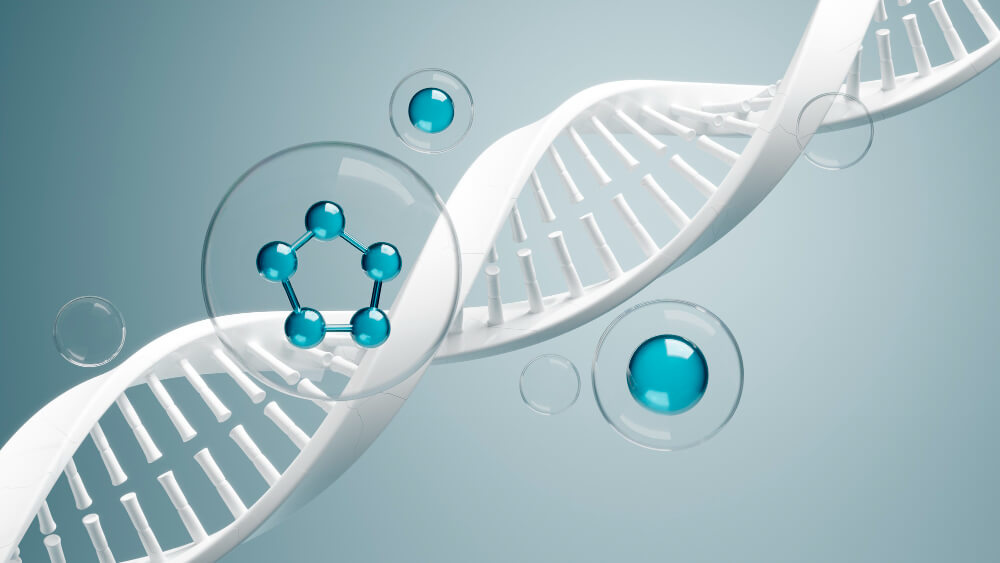Beyond the Fountain of Youth: Your Ultimate Guide to Longevity Medicine
For centuries, humanity has been captivated by the idea of extending life. We’ve told stories of mythical fountains and magical elixirs, all pointing to a deep, universal desire to have more time. But what if the goal was not just more years, but better years? What if we could extend our vitality, our clarity, and our physical capabilities well into our later decades? This is the revolutionary promise that is shifting the entire landscape of modern healthcare.
This emerging field represents a monumental paradigm shift away from the traditional model of medicine, which primarily focuses on treating diseases after they appear. Instead, it asks a more profound question: how can we prevent disease and decline from happening in the first place? It is a proactive, personalized, and data-driven approach aimed at extending our healthspan, the period of our lives spent in good health, free from chronic disease and disability. The core philosophy of longevity medicine is to understand the mechanisms of aging at a biological level and apply targeted interventions to slow them down.
By focusing on the root causes of aging rather than just its symptoms, this discipline empowers individuals to take unprecedented control over their health trajectory. It’s not about chasing immortality; it’s about optimizing the quality of every single year we have. This comprehensive guide will explore the principles, science, and practical applications of this exciting field, showing you how the future of health is not just about living longer, but living better.

What’s the Difference Between Lifespan and Healthspan?
To truly grasp the mission of longevity medicine, we must first understand the crucial distinction between two terms: lifespan and healthspan. They might sound similar, but they represent vastly different concepts that define the quality of our existence.
Lifespan is simple. It is the total number of years you are alive, from birth to death. For the past century, advancements in public health, sanitation, and reactive medicine have successfully increased the average human lifespan. People are, on average, living longer than ever before.
Healthspan, however, is the measure that truly matters for our quality of life. It refers to the number of years you live in good health, with vitality, and without the burden of chronic, age-related diseases. Think of it as your period of peak wellness and function. A long healthspan means more years spent hiking, playing with grandchildren, pursuing hobbies, and engaging fully with the world.
The unfortunate reality is that for many, a gap has emerged between lifespan and healthspan. The final years or even decades of life are often spent managing multiple chronic conditions like heart disease, diabetes, neurodegenerative disorders, and cancer. Longevity medicine’s primary goal is to close this gap, aiming to make our healthspan equal our lifespan.

Is Longevity Medicine Just Another Name for Anti-Aging?
As interest in extending health has grown, you may have heard the term ‘anti-aging’ used frequently. While it comes from a similar desire to combat the effects of time, longevity medicine represents a significant evolution beyond the traditional concept of anti-aging.
The term ‘anti-aging’ has often been associated with aesthetics and surface-level treatments. It might bring to mind skin creams, cosmetic procedures, or supplements promising to turn back the clock. While looking youthful is a pleasant outcome, the focus of traditional anti-aging has historically been on appearance rather than deep cellular health.
Longevity medicine, in contrast, is a rigorous medical specialty grounded in systems biology, genomics, and data science. It is less concerned with the superficial signs of aging and more focused on the underlying biological processes that drive it. It seeks to understand why our cells decline, how our metabolic health shifts, and what genetic predispositions might accelerate our aging process. For a deeper look at the history and definition of this related field, it can be helpful to understand what is anti-aging medicine and how it set the stage for today’s more comprehensive approach.
Ultimately, longevity medicine is not ‘anti’ anything. It is ‘pro’ health, ‘pro’ vitality, and ‘pro’ function. It is a forward-looking discipline that uses advanced diagnostics and personalized interventions to optimize the body’s systems, enhance resilience, and compress the period of morbidity at the end of life into the shortest possible time frame.

What Are the Core Principles of Longevity Medicine?
Longevity medicine is not a single pill or a magic bullet. It is a holistic and deeply personalized framework built upon several key principles. These pillars work together to create a comprehensive strategy for extending healthspan.

How does proactive prevention work?
The cornerstone of longevity medicine is its shift from a reactive to a proactive stance. Instead of waiting for a patient to present with symptoms of heart disease, a longevity practitioner aims to identify the earliest signs of cardiovascular risk, perhaps decades before a clinical event would occur. This is achieved through advanced diagnostics that go far beyond a standard annual physical.
This proactive approach involves screening for risks at a molecular and functional level. It means looking at inflammatory markers, metabolic function, genetic predispositions, and nutrient deficiencies long before they manifest as a diagnosable illness. The goal is to correct course early, using targeted lifestyle, nutritional, or pharmacological interventions to maintain optimal health and prevent disease from ever taking root.

Why is personalization so important?
We all age differently. Your unique genetic makeup, lifestyle, environment, and personal history create a specific blueprint for how your body will change over time. A one-size-fits-all approach to health is therefore inherently limited. Longevity medicine champions n-of-1 medicine, where the patient is their own clinical trial.
Through comprehensive testing, including whole-genome sequencing, microbiome analysis, and detailed biomarker tracking, a practitioner can build a high-resolution picture of your individual biology. This allows for hyper-personalized recommendations. A diet that works wonders for one person may be ineffective for another. A specific type of exercise might be uniquely beneficial based on your genetic profile. This level of personalization is what makes longevity interventions so powerful and effective.

What role does data play?
Data is the lifeblood of longevity medicine. The field thrives on quantifying and tracking health over time. This goes far beyond the number on a bathroom scale. It involves continuous monitoring of key health metrics through wearable devices that track sleep quality, heart rate variability, and activity levels.
This constant stream of data is combined with periodic, in-depth biomarker testing to create a dynamic and detailed view of your health. This allows both you and your practitioner to see the direct impact of interventions. Did a change in diet lower your inflammatory markers? Did a new supplement improve your sleep scores? This data-driven feedback loop empowers you to make informed decisions and fine-tune your strategy for optimal results.

Can we actually reverse biological age?
One of the most exciting concepts in longevity medicine is the difference between chronological age and biological age. Chronological age is simply how many birthdays you’ve had. Biological age, however, is a measure of how old your cells and tissues are at a functional level. It is a far more accurate predictor of your health and mortality risk.
Remarkably, your biological age is not fixed. Through targeted interventions, it is possible to have a biological age that is significantly younger than your chronological age. By improving cellular health, reducing inflammation, and optimizing metabolic function, you can effectively slow down, and in some cases even reverse, certain aspects of the aging process at a biological level. This is the ultimate goal: to die young, as late as possible.

How Do We Measure Aging and Healthspan?
If the goal is to improve something, you first must be able to measure it. Longevity medicine relies on a sophisticated toolkit of diagnostics to quantify the aging process and track the progress of interventions. This goes far beyond the standard cholesterol panel you might get at a routine checkup.
The primary tools for this measurement are biomarkers. A biomarker, short for biological marker, is an objective, measurable characteristic that indicates a specific biological state or process. In longevity, these markers provide a window into your health at the cellular and systemic levels, giving a much clearer picture than your chronological age alone.
These measurements can be grouped into several key categories. They include markers of inflammation like hs-CRP, metabolic health indicators such as fasting insulin and HbA1c, and levels of key hormones. Advanced lipid panels can look at the size and number of cholesterol particles, offering more nuance than a simple LDL or HDL number. This detailed analysis helps practitioners identify areas of dysfunction long before they become disease. To understand the full scope of what is measured, it is helpful to review the key biomarkers of aging and healthspan.
Beyond blood tests, longevity diagnostics can include assessments of body composition, cardiovascular health via advanced imaging, and even epigenetic clocks. These ‘aging clocks’ analyze chemical tags on your DNA to calculate your biological age with increasing accuracy. This robust system of measurement is what separates longevity medicine from wellness fads, grounding it in quantifiable data and objective results.

What Happens to Our Cells as We Age?
To effectively intervene in the aging process, we must first understand why it happens at a fundamental level. Scientists have identified a set of interconnected biological processes known as the ‘Hallmarks of Aging’. These are the cellular and molecular damages that accumulate over time and drive the physical decline we associate with getting older.
These hallmarks include things like genomic instability, which refers to damage to our DNA, and mitochondrial dysfunction, where the power plants of our cells become less efficient. Another critical hallmark is altered intercellular communication, where cells struggle to send and receive signals correctly, leading to systemic issues like chronic inflammation.
One of the most well-studied and important of these hallmarks is cellular senescence. As cells divide and are exposed to stress over time, some of them enter a state of permanent arrest. They stop dividing but don’t die and clear out. Instead, they linger like ‘zombie cells’, spewing out a cocktail of inflammatory proteins that damage surrounding healthy tissue. The accumulation of these senescent cells is a major driver of many age-related diseases, from arthritis to neurodegeneration. Understanding the science of cellular senescence for doctors and laypeople alike is key to appreciating how targeted therapies, known as senolytics, are being developed to clear these harmful cells and rejuvenate tissues.
By targeting these root causes, longevity medicine aims to repair and maintain the body at its most basic level. The strategy is not to fight a single disease but to bolster the entire system against the very processes that allow diseases to develop.

What Scientific Proof Supports Longevity Medicine?
Given its ambitious goals, a healthy dose of skepticism is natural. Is this field built on solid scientific ground, or is it just theoretical? While longevity medicine is a relatively new and rapidly evolving specialty, it is firmly rooted in decades of rigorous scientific research into the biology of aging.
The field is a convergence of multiple scientific disciplines: genomics, molecular biology, data science, and clinical medicine. The interventions it employs are based on a growing body of evidence from laboratory studies, animal models, and increasingly, human clinical trials. The very foundation of the field rests on the scientific consensus around the aforementioned Hallmarks of Aging.
Furthermore, the principles of healthy living that form the base of any longevity plan are supported by mountains of evidence from traditional medical research. The importance of diet, exercise, and sleep is not controversial. Longevity medicine simply takes these foundational elements and enhances them with a layer of personalization and advanced diagnostics. For those seeking a detailed overview of the studies and trials that form the backbone of this field, it is useful to explore what is the evidence base for longevity medicine.
Even the most established medical institutions now recognize the importance of these concepts. For example, extensive resources are dedicated to understanding the mechanisms of healthy aging and promoting preventative health strategies. This growing consensus from sources like Harvard Health on aging demonstrates that the core tenets of longevity are moving from the fringe to the mainstream of medical thought.

What Are Common Longevity Interventions?
Once a comprehensive diagnostic workup has been completed, a longevity practitioner will create a personalized plan of action. These interventions span a wide spectrum, from foundational lifestyle habits to cutting-edge therapies, all designed to target the specific biological needs of the individual.

What lifestyle changes have the biggest impact?
The foundation of any longevity protocol is lifestyle. No supplement or therapy can overcome a poor diet, lack of exercise, or chronic sleep deprivation. The ‘big four’ of lifestyle interventions are nutrition, exercise, sleep, and stress management. However, longevity medicine applies a layer of precision to each.
Nutrition is tailored to an individual’s genetics and metabolic health, often focusing on whole foods, optimizing protein intake, and potentially incorporating strategies like time-restricted eating. Exercise prescriptions are specific, balancing strength training to build muscle, cardiovascular work for heart health, and stability training to prevent injury. Sleep is optimized by tracking its quality and addressing issues that disrupt it. Stress management techniques like meditation and breathwork are implemented to lower cortisol and reduce chronic inflammation.

Are there specific supplements or molecules of interest?
Beyond lifestyle, longevity medicine often involves targeted supplementation to address specific deficiencies or to activate pathways associated with health and longevity. This is done based on biomarker testing, not guesswork. Common supplements might include Vitamin D, magnesium, or omega-3 fatty acids if levels are low.
Additionally, the field is actively researching and utilizing molecules that interact with the aging pathways. These include compounds like NAD+ precursors, which support mitochondrial health, and metformin, a diabetes drug that has shown promise in modulating aging processes. Other molecules like rapamycin and fisetin are also subjects of intense study for their potential to extend healthspan. These are always used under the guidance of a qualified physician.

What advanced diagnostics are used?
To guide these interventions, practitioners use a suite of advanced diagnostic tools that are not typically part of standard care. This includes whole-body MRI and CT scans for the early detection of cancer and cardiovascular disease. Companies at the forefront of this space, such as Human Longevity, Inc., have pioneered data-driven health intelligence platforms that integrate genomic and phenotypic data to provide a comprehensive health assessment.
These deep diagnostics provide an unparalleled view of an individual’s current health status and future risks. This allows for truly proactive interventions, moving healthcare from a system of sick care to one of genuine health optimization.

What Does the Future of Longevity Look Like?
The field of longevity medicine is advancing at an exponential pace. What seems like science fiction today is rapidly becoming clinical reality. The convergence of artificial intelligence, biotechnology, and personalized medicine is creating a future where we have even greater control over our biological destiny.
We are seeing massive investment and interest from both the scientific community and the business world, a trend highlighted in major publications. The idea that we can modulate the aging process is no longer a fringe concept, and reporting from outlets like Fortune showcases how the science of longevity is becoming a major focus for innovation and capital. This influx of resources is accelerating research and development dramatically.
The future will likely see the widespread use of regenerative therapies, such as stem cell treatments and gene therapies, to repair damaged tissues and organs. AI will play an even larger role, analyzing vast datasets to predict disease risk with incredible accuracy and to design perfectly personalized health protocols. The focus will continue to shift towards maintaining youthful function for as long as possible.
Ultimately, the future of longevity medicine is a future where your 80s and 90s can be as vibrant, active, and fulfilling as your 50s and 60s. It is a future defined not by the fear of aging, but by the lifelong pursuit of health, vitality, and human potential.
Longevity medicine offers a powerful and optimistic vision for the future of human health. It is a collaborative journey between a patient and a practitioner, grounded in science and driven by data, with the ultimate goal of adding life to our years, not just years to our life.
Frequently Asked Questions

How can a single type of drug treat so many different age-related diseases?
Senolytics can address a wide range of conditions because they target a fundamental biological driver of aging known as cellular senescence. As we age, senescent cells accumulate in various tissues throughout the body, from joints and lungs to kidneys and the brain. These cells secrete a cocktail of harmful inflammatory proteins (SASP), which damages surrounding healthy tissue and creates a chronic, low-grade inflammation that contributes to many different diseases.
By selectively identifying and eliminating these dysfunctional cells, senolytics remove the source of this widespread damage. This allows the body’s natural repair mechanisms to function better and reduces the inflammation that fuels conditions as varied as osteoarthritis, idiopathic pulmonary fibrosis, and even aspects of neurodegeneration. Therefore, instead of treating one symptom, the drug addresses a common root cause shared by numerous age-related pathologies.

What does a typical senolytic treatment regimen look like for a patient?
Current clinical trials are exploring an intermittent dosing strategy, often referred to as a "hit-and-run" approach. Unlike medications that are taken daily, senolytics are typically administered for a short period, such as a few consecutive days, followed by a long interval of several weeks or even months without the drug. This cycle is then repeated.
The rationale for this intermittent schedule is that senescent cells take time to re-accumulate to harmful levels after being cleared. This approach is designed to maintain the therapeutic benefits of reducing the senescent cell burden while minimizing the patient’s exposure to the powerful drugs. This helps to reduce the risk of potential side effects and toxicity that could arise from continuous, long-term use.

Besides targeting specific diseases, can senolytics have broader anti-aging effects in humans?
While current clinical trials must focus on specific, measurable diseases for regulatory approval, the ultimate promise of senolytics is the improvement of overall healthspan. The underlying theory is that by clearing senescent cells systemically, these drugs can alleviate the collective burden of aging on the body. Preclinical studies in animal models have consistently shown that senolytics can delay, prevent, or alleviate multiple age-related dysfunctions at once, improving vitality.
In human trials, researchers often measure secondary outcomes like physical function, frailty, and inflammatory markers in the blood. Improvements in these general health indicators, even when treating a single condition like kidney disease, suggest a broader, systemic benefit. While it is too early to claim senolytics are a true "anti-aging" pill for humans, the evidence points toward their potential to promote a healthier aging process beyond just treating one disease.
Are you ready to be at the forefront of medical innovation? Discover the most comprehensive functional medicine training, longevity training, and biohacking certification programs designed specifically for healthcare professionals, medics, and clinic owners who want to master regenerative medicine protocols and anti-aging therapies. Take control of the future of medicine with Talking Longevity.







